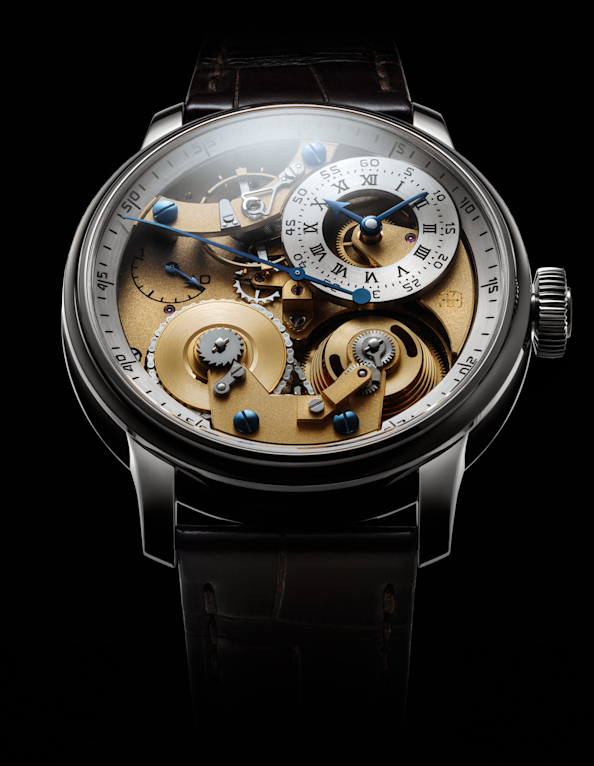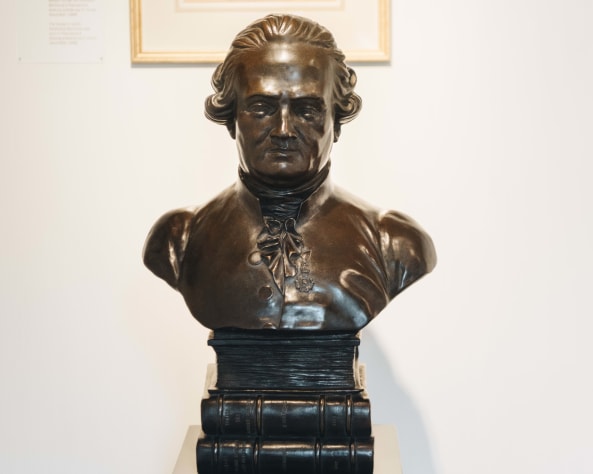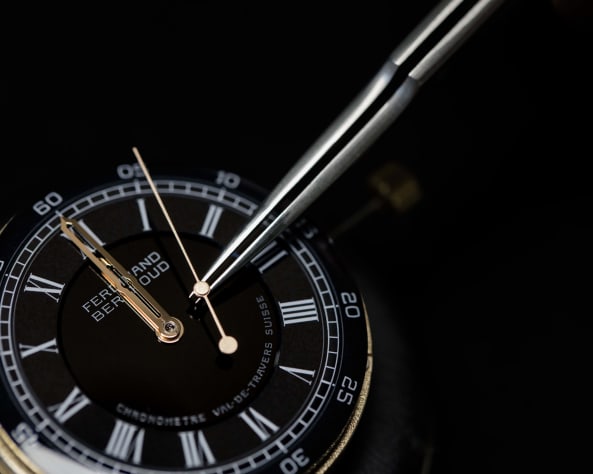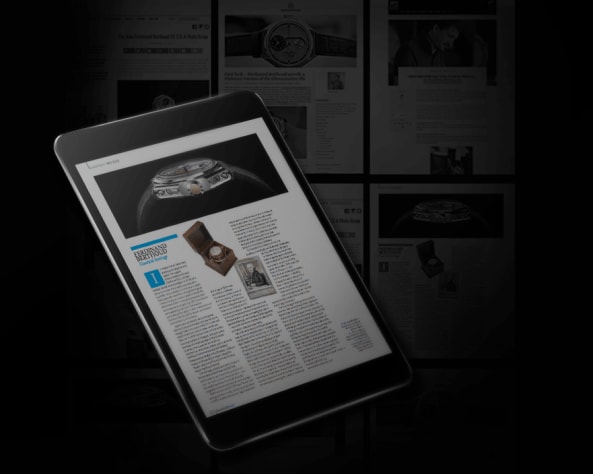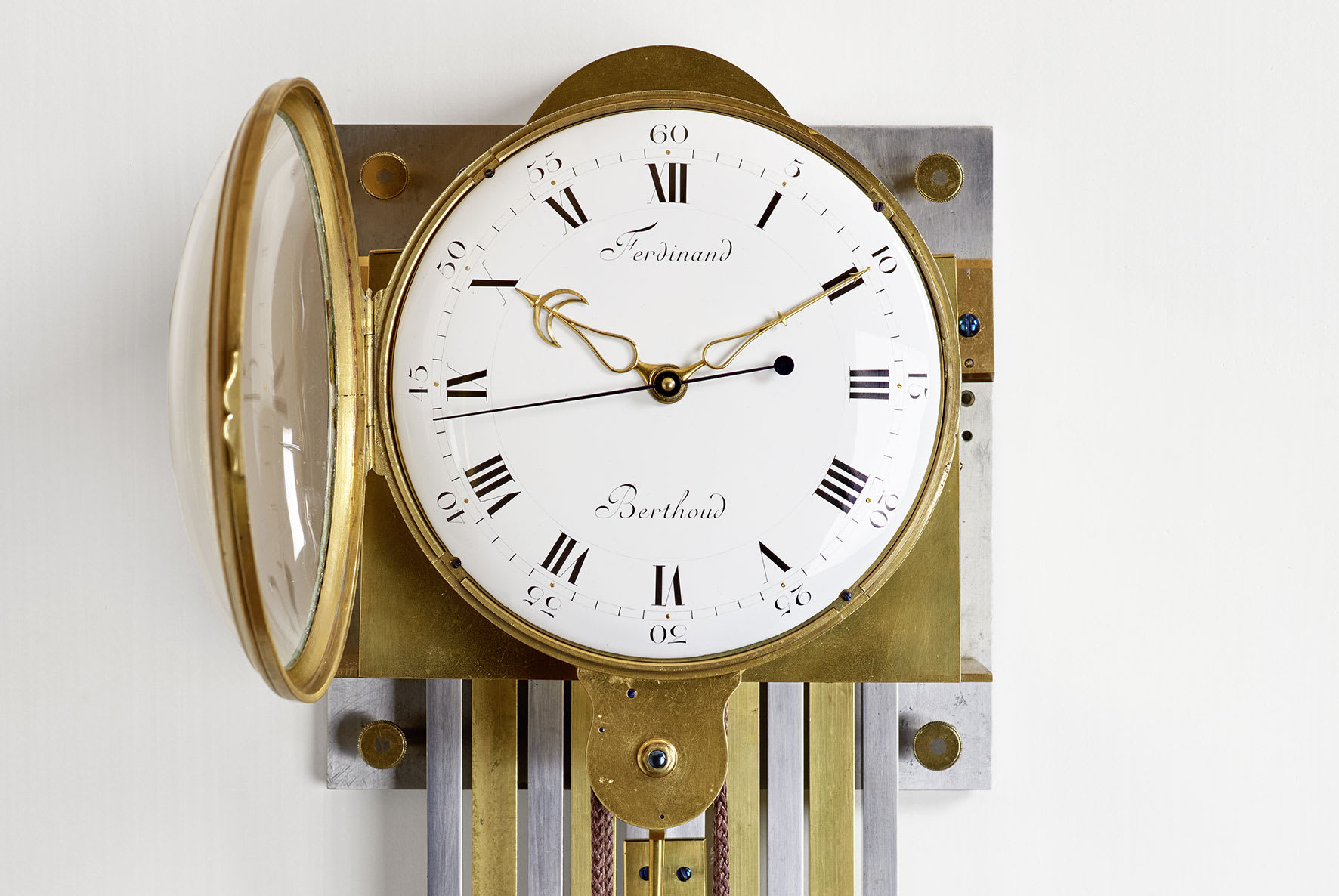


A high-precision instrument beating the seconds, the valet astronomique [astronomical valet] is one of the few watch mechanisms that entirely lives up to the meaning of the term “timekeeper”. Thanks to Ferdinand Berthoud's scientific work, it underwent several developments and variants that the watchmaker describes in detail in his works, under the names pendulum, clock, timer or valet, always accompanied by the adjective "astronomical".
The mission of a now little-known timepiece
Initially designed for taking readings during astronomical observations conducted in mobile camps, this transportable regulator, placed near the meridian telescope, was also used as a reference when checking the movement of longitude clocks before they were taken aboard ships and during each land stop.
By keeping true time day and night, the valet astronomique, indicating hours, minutes and seconds, made it possible to measure with extreme precision the duration of astronomical phenomena, such as the meridian passage of the sun or a star. Protected by a dedicated case, its mechanism featuring a simplified design, driven by a weight and equipped with a temperature-compensated pendulum, is nevertheless perfectly executed.
The valet astronomique in Ferdinand Berthoud's writings
As early as 1759, the catalogue accompanying Berthoud's first publication, L'Art de conduire et de régler les Pendules et les Montres [The art of operating clocks and watches] briefly presented an instrument that could be considered the forerunner of his astronomical valets: “Une Pendule à secondes pour un Astronome : elle n’a point de sonnerie ; elle va 15 jours sans remonter ; le mouvement est enfermé dans un tambour de cuivre qui a 5 pouces de diamètre, grandeur du cadran. Cette boîte ou tambour tient à une forte plaque de cuivre, qui s’attache contre le mur : il y a des vis de rappel pour mettre la Pendule droite en tous sens. Je rends le transport de cette pièce facile, en démontant la verge du Pendule en trois parties ; de sorte que tout se place dans une caisse d’emballage ou Etui qui n’a que 15 pouces de longueur : Cet Etui sert toutes les fois qu’on veut transporter la Pendule.”[1] [”A Clock with seconds for an Astronomer: it has no striking mechanism; it runs for 15 days without requiring rewinding; the movement is enclosed in a copper drum measuring five inches in diameter, the size of the dial. This case or drum is secured to a strong copper plate, which is fixed to the wall: there are adjustment screws to put the clock straight in all directions. I make it easy to transport this part by dismantling the rod from the Clock in three parts; so that everything is placed in a packing case or case that is only 15 inches long: This case is used whenever you want to transport the Clock.”]
In his book De la Mesure du Temps, [The Measurement of Time] Ferdinand Berthoud presents various astronomical clocks, including the one executed in 1766 for the Count of Fleurieu, an officer of the French Royal Navy and hydrographer[2]. It was in his Traité des Horloges marines [Treatise on marine chronometers], published in 1773, that Berthoud first mentioned the specific term "valet astronomique"[3]
An exceptional copy kept in the collections of the L.U.CEUM
Formerly dedicated to serving astronomers in the heart of observatories and during scientific expeditions, the valet astronomique is still appreciated today as a reference time instrument, but also for its powerful and refined architecture.
Attached to a leaf-spring suspension system and tipped with an imposing flat brass bob, its compensating pendulum with chassis-type verge escapement is composed of steel and brass rods placed alternately to compensate for the effects of temperature differences. Built into its central part is a cursor, which is moved manually on a graduated scale in order to optimize the "Gain-Loss" adjustment.
Very carefully executed and bearing the signature "Ferdinand Berthoud AParis" on its rear plate, the mechanism contains a gear train consisting of three wheels and pinions and a pin-pallet escape-wheel. Driven by a weight, it offers a power reserve of 15 days.
List of illustrations
1) Ferdinand Berthoud, astronomical regulator (valet astronomique) with bimetallic compensation pendulum and chassis-type verge escapement, circa 1795, overall view (L.U.CEUM Collection, Fleurier). Dimensions: Height 139 cm, Width 25 cm, Depth 13 cm.
2) Ferdinand Berthoud, astronomical regulator (valet astronomique) with bimetallic compensation pendulum and chassis-type verge escapement, circa 1795, view of the graduation and the cursor on the pendulum.
[1] L’Art de conduire et de régler les Pendules et les Montres [The art of operating and adjusting clocks and watches], Paris, published the Author and Michel Lambert, 1759, Catalogue, Ou Notice des Ouvrages d’Horlogerie que fait & vend M. Ferdinand Berthoud, Horloger à Paris [Catalogue or Manual of Horological Works made and sold by Mr Ferdinand Berthoud, Horologist in Paris], p. 7, N° 8.
[2] De la Mesure du Temps, ou Supplément au Traité des Horloges marines, Et à l’Essai sur l’horlogerie [The Measurement of Time or a supplement to the treatise on marine chronometers and the essay on horology], Paris, published by J. G. Mérigot le jeune, Didot Fils et Jombert jeune, 1787, part two, Chapter VII, “Horloge Astronomique, d’une construction fort simple” [Astronomical Clock with a very simple construction], pp. 209-210 as well as plate VIII (cf. illustration 5).
[3] Traité des Horloges marines [Treatise on marine chronometers], Paris, published by J. B. G. Musier fils, 1773, part four, Chapter 1, “Description du Compteur, ou Valet astronomique” [Description of the Timer, or Astronomical Valet], pp. 470-471 as well as XXVII.
